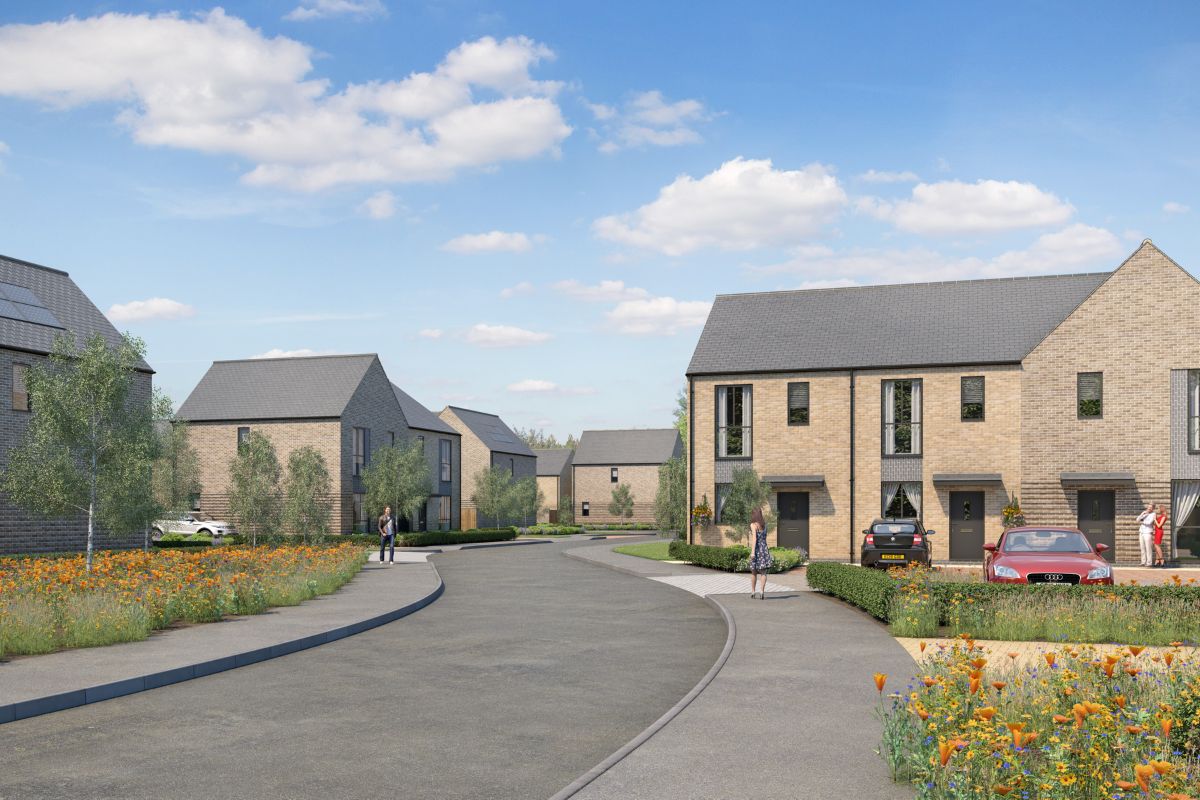Places for People Feature - Climate change: taking the future in our own hands
David Cowans discusses the role of housing providers in tackling the climate crisis and why a more proactive approach could hold the key to workable zero-carbon solutions.
We all have a responsibility to address climate change as the biggest global emergency we face and cutting carbon emissions will require bold and serious changes by the housing sector and there is no time to waste.
At the National Housing Summit 2021 in the spring, I took part in a panel discussion and the challenge of the problem was made clear. As well as ensuring new homes are built to meet the Government’s zero carbon targets, we have to consider how our existing stock could be retrofitted to perform to the required levels.
This is a huge and complex task. As highlighted by panellist Philip Dunne MP, out of the UK’s 29 million homes, two thirds do not meet the energy efficiency standards that have been set by the Government. In England alone, 11 million properties fail to meet EPC band C. On that basis, it’s been predicted that two homes would have to be retrofitted every minute between now and 2050 to address the issue.
Stepping up
More recently I have participated in other panel discussions on how to collaboratively achieve our net zero carbon 2050 goal. There has been a lot of talk about whether the Government is doing enough to support the transition to low carbon, including concerns about the time it is taking to publish its Heat and Buildings Strategy. However, given the urgent need for action, the onus is on all of us to step up to the plate and act now to help shape the future.
Piloting new technology is one crucial step that we can take as a sector to help establish practical and cost-effective solutions for retrofitting. Over the last two years, we have been working collaboratively with likeminded organisations to explore new technologies and processes that could help to decarbonise our existing stock.
One project has seen us install more than 700 heat batteries inside our homes across multiple locations. These products have been designed to store large amounts of energy from renewable sources and release it as heat to deliver hot water and space heating when required. As well as delivering low carbon heating, the technology can help to tackle fuel poverty and improve comfort for our customers.
Residents can offset peak energy costs by charging their battery with cheaper off-peak electricity, or diverting energy from solar panels, a heat pump or other renewable sources.
The human side
Whether we are retrofitting an existing home or building a new one, we must also think about people. There is no point creating and installing technology that is difficult to understand, operate and manage. We need to find solutions that are workable not only in terms of cost and meeting energy standards, but how people interact with them.
This requires stronger engagement with our customers as we learnt when carrying out a large-scale refurbishment at our estate in Padiham, Lancashire. This involved the installation of a broad mix of renewable technologies. Extensive consultation with residents, including meetings with a specialist consultant, ensured that people could have a say in the design process and understood how to use the new equipment and further reduce energy consumption. This was instrumental in the project’s success.
Scaling up
Another strong message that came out of the housing summit was the importance of scale in cutting carbon emissions – a point that we have also been stressing for a number of years.
The pilot projects we have carried out so far haven’t solved the retrofitting problem, but they are helping us to explore solutions that could be scaled up and, which in turn, could lower installation costs.
Collaboration is key to this approach. By working together as a sector and with other partners, we stand a much better chance of tackling the issues we face. That is why we continue to work with European and UK partners to undertake research. We have also joined forces with Energy Systems Catapult to identify low carbon technologies and business models that we could potentially deploy over the next 10 years.
New funding mechanisms
The housing sector should not rely solely on Government to provide funding for environmentally-friendly technology. There are other avenues we could explore, including green finance and the potential for new and more attractive funding models. This could play a huge role in achieving better environmental outcomes and developing zero carbon solutions for homes.
Thinking more widely, another idea is to create a mechanism that encourages energy companies to install new technology and cover their costs via fuel charges.
A greater focus on incentive schemes for homeowners, landlords and investors could also hold the key to driving energy efficiency improvements along with lower rates of VAT on energy products.
The future is now
Tackling climate change will require transformational change across the housing sector. Undeniably, there are challenges ahead but at the same time, opportunities for us to take a more proactive approach involving research, piloting, finance and collaboration. The future of housing is in our hands – and we must act now to do what we can to make sure it’s carbon free.



